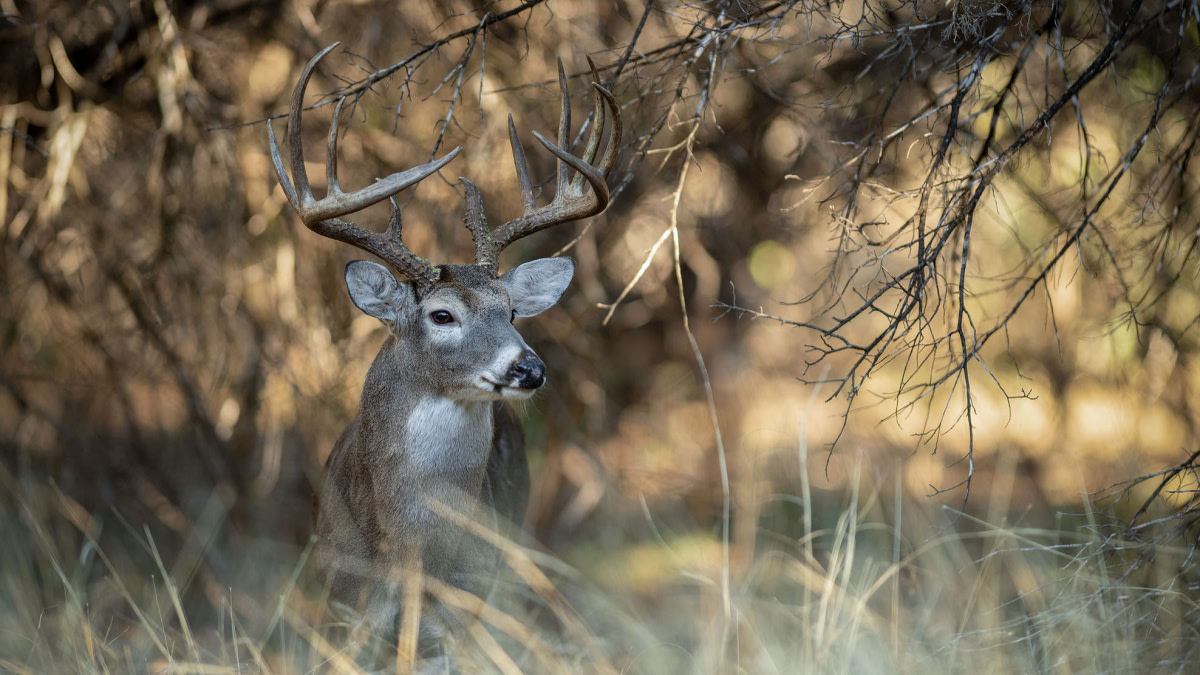
The name Drury has become synonymous with deer hunting.
Dubbed “the mad scientist” by some hunters, Mark Drury has dissected deer behavior—specifically mature buck movement—for decades. And there’s certainly a method to his madness.
Drury’s smartphone application, DeerCast, launched in 2018. He says it correlates atmospheric conditions with deer movement based on 40 years of research. The proprietary algorithm can now predict deer movement with close to 95% accuracy, Drury claims. Wind plays a major role in that formula.
Blowing in the Wind Drury focuses his hunting effort on days when wind is expected to clock 8 to 15 miles per hour. He believes that speeds between 12 and 14 miles per hour are the sweet spot for whitetail movement and comfort. In this range, deer are generally at ease while feeding and are less likely to spook.
When winds exceed 20 miles per hour, deer begin to get apprehensive and go on high alert. However, light and variable winds leave whitetails even more skittish.
“They are often more relaxed on a high windspeed day than on a low windspeed day,” Drury said. “They are totally wigged out when that wind speed is below 5 miles per hour—just totally nervous.”
The deafening silence of a wind-free day allows whitetails to pick up the slightest sounds. That could even lead to a big buck jumping the string and hightailing out of your life forever.
When it’s too blustery or too calm, Drury abandons the high ground and heads low. He almost exclusively sticks to ground blinds when wind is nearly nonexistent and steers clear of ridges when it’s howling.
The Only Constant is Change Wind direction also plays a role in deer movement. What’s important isn’t the direction itself but a change in direction, particularly after several consecutive days of steady winds. Drury says deer prefer to move when the wind reverses. In the early season, a cold front bringing in a northerly front after consistent southerly winds can trigger that rare morning movement.
Drury advises hunters to scope out the long-term forecast and jump on changes in wind direction and speed immediately. “The worst-case scenario is stale air, consistent air, patterns that don’t change,” he said. “It will diminish movement day by day, and it will be later.”
But the first day wind flip-flops, he says, you can bet bucks will be moving.
It’s All Relative The wind’s significance and its optimal conditions for deer movement are relative to the time of year. Drury’s DeerCast algorithm gives wind direction and speed more or less weight at different phases of the season, while factoring 13 other variables to pinpoint the best times to hunt.
While certain wind, temperature, precipitation, and pressure systems might be common in December, those same conditions could throw deer off in September. Weather conditions will ideally be on par with day-to-day averages from previous years.
“Our thought process changes drastically based on what phase the deer are in,” Drury said.
Play the Wind According to Drury, wind direction and speed not only determine deer movement but also where you should hunt—or if you should even venture out at all. He employs these strategies not just to avoid getting skunked but to prevent getting noticed, too.
“Don’t let a deer know you’re hunting them,” he said. “And if your wind is blowing directly into a bedding area, you’re making a dumb decision.”
Aim for a sit where you’ll have a consistent, moderate breeze in your face. Human scent can reach deer several hundred yards downwind, so hunters should also be incredibly careful when approaching their stands and avoid swirling winds and thermal at all costs.
“Safe wind directions cannot be overstated,” Drury said. “Having one [hunting spot] for every single wind condition, speed, and time of year is very, very important. No matter how many spots you have, you still don’t have enough.”
To learn more about the variables Drury uses to predict deer movement and take down big bucks, listen to episode 229 of the Wired to Hunt Podcast.






